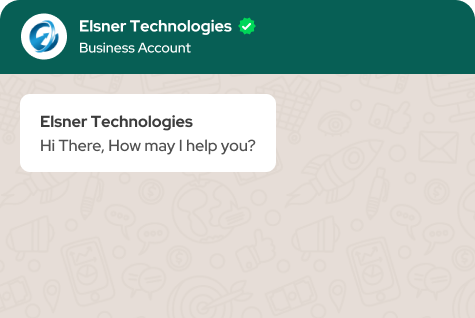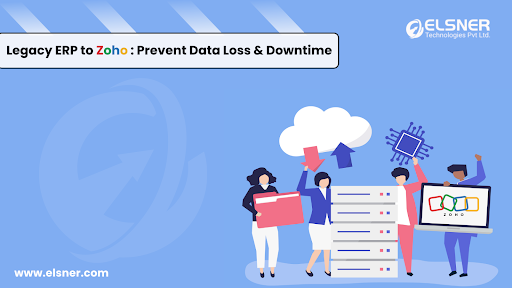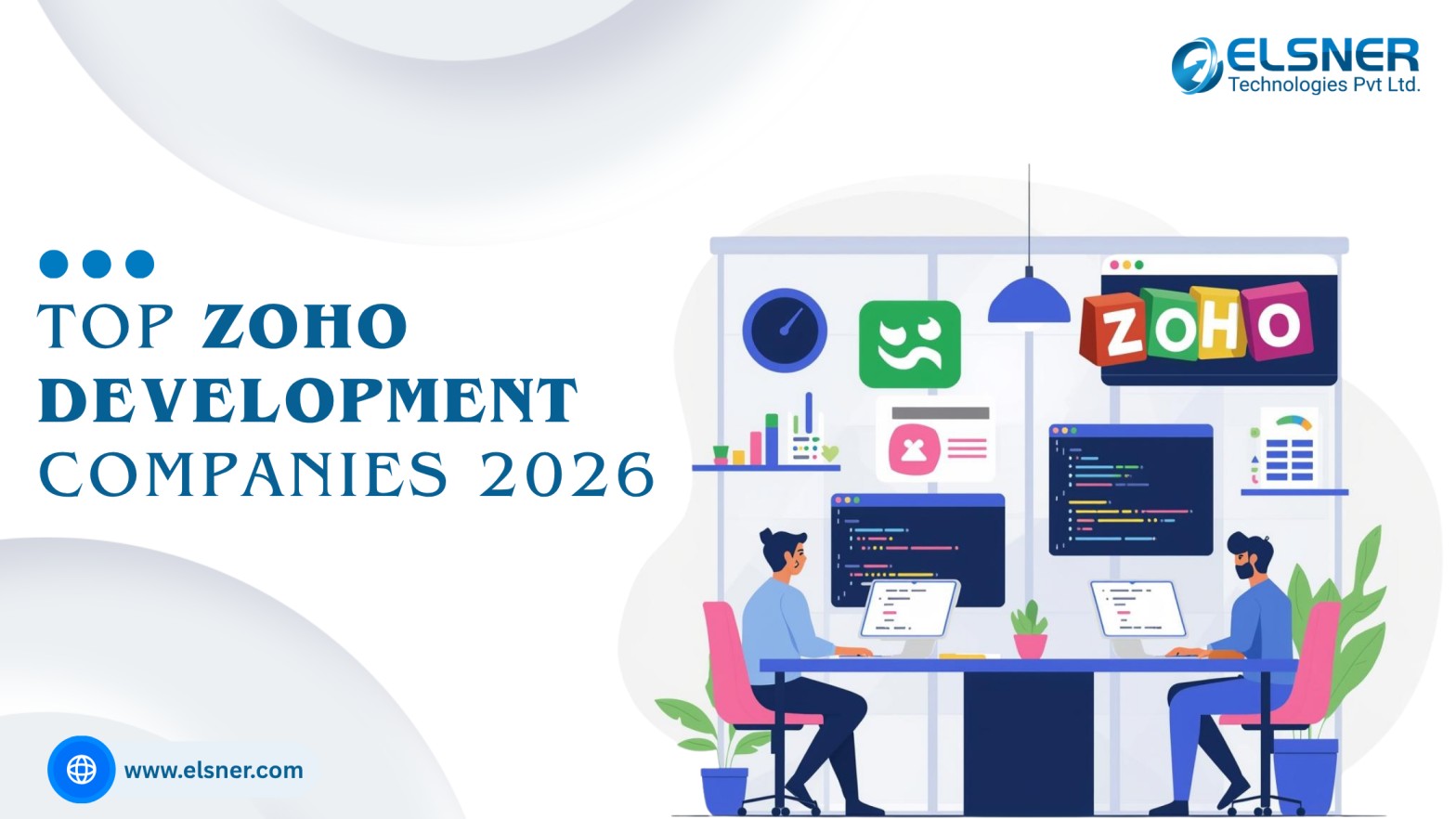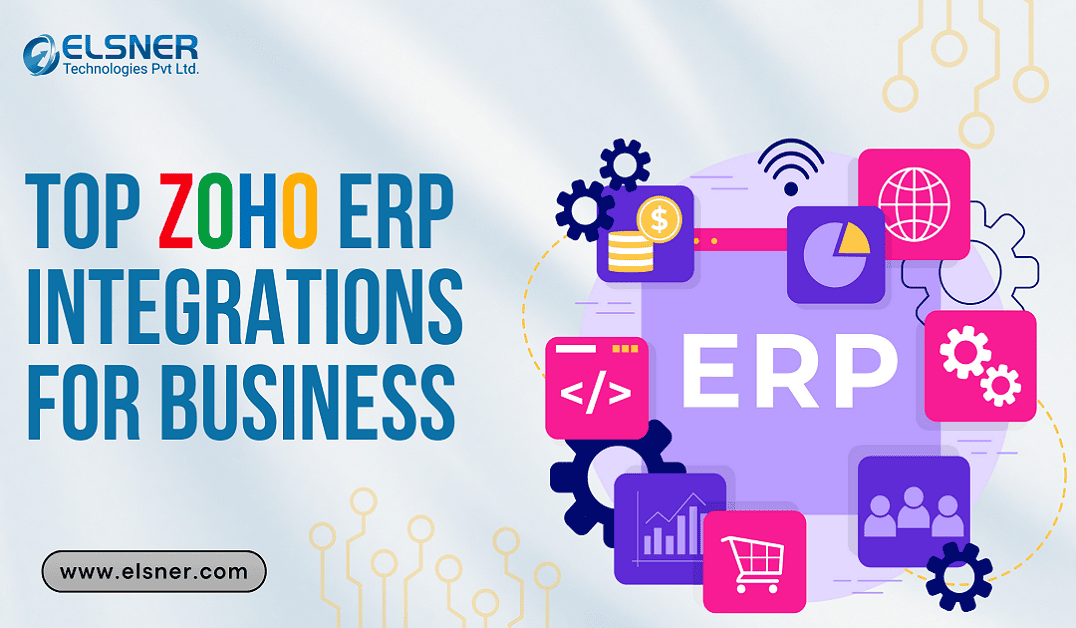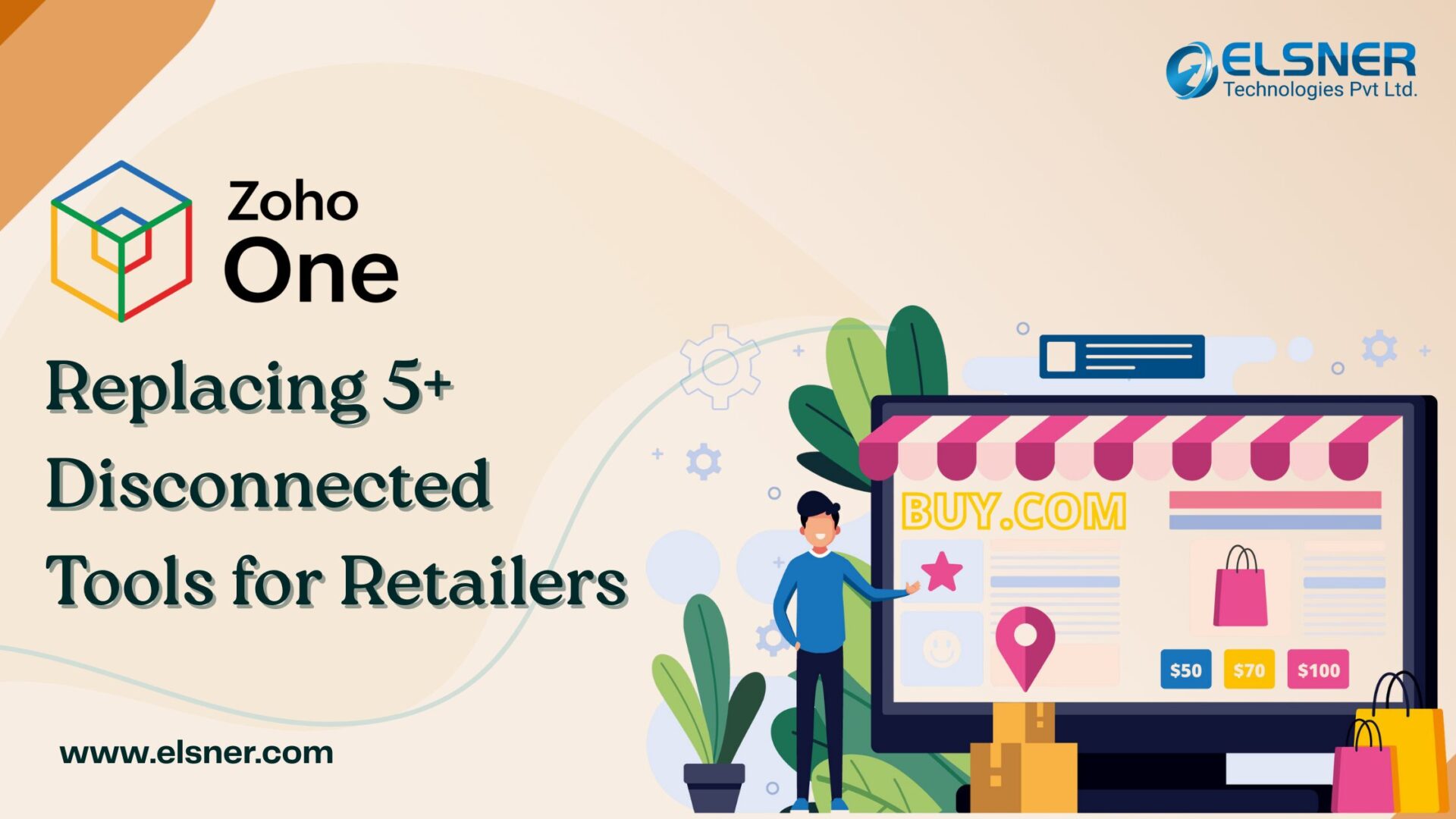- Why Do Businesses Move from Legacy ERP to Zoho?
- The common pain points include:
- The Zoho ERP system advantage:
- Why Data Loss Happens in ERP Migrations?
- The most common culprits include:
- Why Downtime Happens (and How to Avoid It)?
- Impact of downtime:
- What are the Proven Strategies to Avoid Data Loss and Downtime?
- Step 1: Audit Your Current ERP
- Step 2: Map Data Fields to Zoho
- Step 3: Clean Data Before Migration
- Step 4: Run a Test Migration
- Step 5: Backup Everything Twice
- Step 6: Schedule Smartly
- Step 7: Validate Post-Migration
- A Practical Migration Roadmap
- Sample Migration Walkthrough: Legacy ERP to Zoho
- Scenario:
- Challenges:
- With a structured migration plan, they could:
- Final Takeaway
- FAQs
- Q: Can I migrate from my ERP to Zoho without losing any data?
- Q: How long does a typical migration take?
- Q: Do I need a Zoho migration partner?
- Q: What Zoho apps can replace a traditional ERP?
- Q: Will my integrations still work after migration?
Planning a Zoho Migration ERP project but worried about losing data or facing days of downtime? You are not alone. ERP migrations are among the most complex IT shifts any business can attempt — and the numbers show why caution is essential.According to industry reports:
- 30–40% of ERP migration projects face unexpected downtime beyond the planned cutover.
- 1 in 4 companies lose critical data during ERP-to-CRM or ERP-to-ERP migrations.
- Poor planning is the leading cause of delays and corrupted records.
Migrating from a legacy system to a modern Zoho ERP software setup — whether it is Zoho ERP system modules like Zoho Inventory, Zoho Books, Zoho CRM, or Zoho Creator — can completely change how your business runs. But success is not automatic. You need a clear plan, smart execution, and a focus on both uptime and data integrity.In this guide, we’ll cover: why companies move from legacy ERP to Zoho, the real risks of data loss and downtime, proven strategies to avoid those risks and a lot more. So, let’s dig in:
Why Do Businesses Move from Legacy ERP to Zoho?
Legacy ERP systems may have worked well years ago — but in today’s fast-changing market, they often hold businesses back.
The common pain points include:
- High maintenance costs: Older setups demand costly server upkeep and steep licensing fees.
- Slow adaptability: Adding new features or integrations can take months, even years.
- Limited remote access: Many predate cloud-first work models, restricting mobility.
- Data silos: Linking ERP to CRM, accounting, or eCommerce is clunky — if it works at all.
- Vendor lock-in: Switching modules or expanding capabilities is expensive and time-consuming.
The Zoho ERP system advantage:
- 100% cloud-native and mobile-ready
- 60+ tightly connected business apps under one ERP software Zoho umbrella
- Built-in AI insights via Zoho Zia at no extra cost
- Scales easily from small teams to global enterprises
- Flexible pricing — often 50–70% lower than legacy systems
In 2025, more organisations are replacing outdated setups with the ERP system Zoho offers — not only to cut costs, but to stay agile, competitive, and ready for the next wave of digital transformation.
Why Data Loss Happens in ERP Migrations?
When businesses move from a legacy ERP to a modern system like Zoho, data loss is rarely caused by one catastrophic error. Instead, it is usually the result of multiple smaller mistakes building up over time.
The most common culprits include:
- Outdated or inconsistent data structures
Legacy ERPs often store identical data types in different formats across modules. During a Zoho Migration ERP project, this inconsistency makes one-to-one mapping to the Zoho ERP system more complex and error-prone. - Poor field mapping
If a “Customer ID” in your old ERP gets mapped incorrectly to “Account Number” in Zoho CRM, it can lead to overwritten or missing records. This is why precise mapping is critical when setting up Zoho ERP software. - Hidden dependencies
A small change in the ERP can trigger automated processes in connected accounting, inventory, or HR systems. If these dependencies are not mapped during migration, you could unintentionally break vital workflows. - Weak backup strategies
Some companies keep only partial backups — or worse, none at all. Without a complete backup, any migration issue leaves you without a safe restore point. - Manual errors
Copy-paste mistakes, incorrect import file formats, or oversight during verification can corrupt data and delay your go-live date.
Why Downtime Happens (and How to Avoid It)?
Downtime isn’t just a tech issue — it’s a business continuity risk. Common causes:
- Migrating during high-activity periods
- Underestimating how long data transformation will take
- Insufficient hardware or bandwidth for data transfer
- Failing to test the migration in a sandbox first
Impact of downtime:
Even a single day offline can mean missed orders, delayed shipments, frustrated customers, and lost revenue.
What are the Proven Strategies to Avoid Data Loss and Downtime?
Here’s how to significantly reduce your risks:
Step 1: Audit Your Current ERP
- List every module, integration, and data type.
- Identify duplicates, outdated records, and inconsistencies.
- Decide what to migrate, what to archive, and what to discard.
Step 2: Map Data Fields to Zoho
- Create a field-mapping document showing how each ERP field corresponds to a Zoho field.
- Pay special attention to custom fields and relationships between tables.
Step 3: Clean Data Before Migration
- Remove inactive customers or suppliers.
- Correct formatting errors (e.g., inconsistent phone numbers).
- Merge duplicate records.
Step 4: Run a Test Migration
- Select a representative dataset (5–10% of total records).
- Import into a Zoho sandbox.
- Verify data integrity and workflows before scaling up.
Step 5: Backup Everything Twice
- Keep one local backup (external drive or server).
- Store another in the cloud (AWS S3, Google Cloud Storage, or similar).
Step 6: Schedule Smartly
- Choose low-activity windows (weekends or off-peak hours).
- Communicate the schedule to all departments.
Step 7: Validate Post-Migration
- Check that all records, files, and links work.
- Test every critical workflow (sales, invoicing, order fulfilment).
A Practical Migration Roadmap
Here’s a simplified timeline for moving from a legacy ERP to Zoho without disruption:
| Phase | Duration | Key Activities | Risk Reduction Focus |
| Planning | 1–2 weeks | ERP audit, scope definition, resource allocation | Identify gaps early |
| Data Preparation | 2–3 weeks | Data cleaning, field mapping, workflow analysis | Reduce mapping errors |
| Test Migration | 1 week | Sandbox import, verification, fixes | Catch issues before full migration |
| Full Migration | 2–5 days | Bulk data transfer, integration setup | Schedule off-peak |
| Validation | 1 week | User testing, issue resolution, final backups | Ensure integrity |
| Optimisation | Ongoing | Workflow tweaks, automation setup | Continuous improvement |
Sample Migration Walkthrough: Legacy ERP to Zoho
Scenario:
A mid-sized manufacturing company uses a 15-year-old ERP for sales, inventory, and accounting. It’s on-premise, with slow remote access and high maintenance fees.
Challenges:
- 250,000+ records in multiple formats
- Custom BOM (Bill of Materials) modules
- Integrations with accounting and eCommerce systems
With a structured migration plan, they could:
- Complete migration in 8 weeks
- Reduce downtime from 3 days to under 6 hours
- Eliminate duplicate customer records (cut by 20%)
- Automate reporting, saving 15+ hours/week
- Lower annual ERP costs by 50%
Final Takeaway
Migrating from a legacy ERP to Zoho ERP software is not just a tech upgrade — it is a chance to modernise the way your business operates. But without a solid strategy, the risks of downtime and data loss during a Zoho Migration ERP are very real.Follow a clear framework — audit → map → clean → test → backup → migrate → validate — and if your ERP is heavily customised, consider working with a Zoho ERP system migration partner.Done right, you will not only protect your data but also speed up operations, reduce costs, and gain the flexibility to scale faster.
FAQs
Q: Can I migrate from my ERP to Zoho without losing any data?
Yes — when you audit, map, clean, and test ahead of time, most Zoho Migration ERP projects achieve 100% usable data transfer. Skipping these steps is the main cause of loss.
Q: How long does a typical migration take?
For smaller systems, 4–6 weeks is common. Highly customised ERP system Zoho migrations may require 8–12 weeks.
Q: Do I need a Zoho migration partner?
Not always, but for complex ERP setups, a partner offering Zoho consulting services can reduce risks, shorten timelines, and ensure smoother adoption.
Q: What Zoho apps can replace a traditional ERP?
Common replacements include Zoho Inventory for stock management, Zoho Books for accounting, Zoho CRM for sales, and Zoho Creator for custom workflows.
Q: Will my integrations still work after migration?
Most modern integrations can be rebuilt in Zoho ERP software using APIs, native connectors, or Zoho Flow. Older legacy integrations may need custom development.

About Author
Pankaj Sakariya - Delivery Manager
Pankaj is a results-driven professional with a track record of successfully managing high-impact projects. His ability to balance client expectations with operational excellence makes him an invaluable asset. Pankaj is committed to ensuring smooth delivery and exceeding client expectations, with a strong focus on quality and team collaboration.
